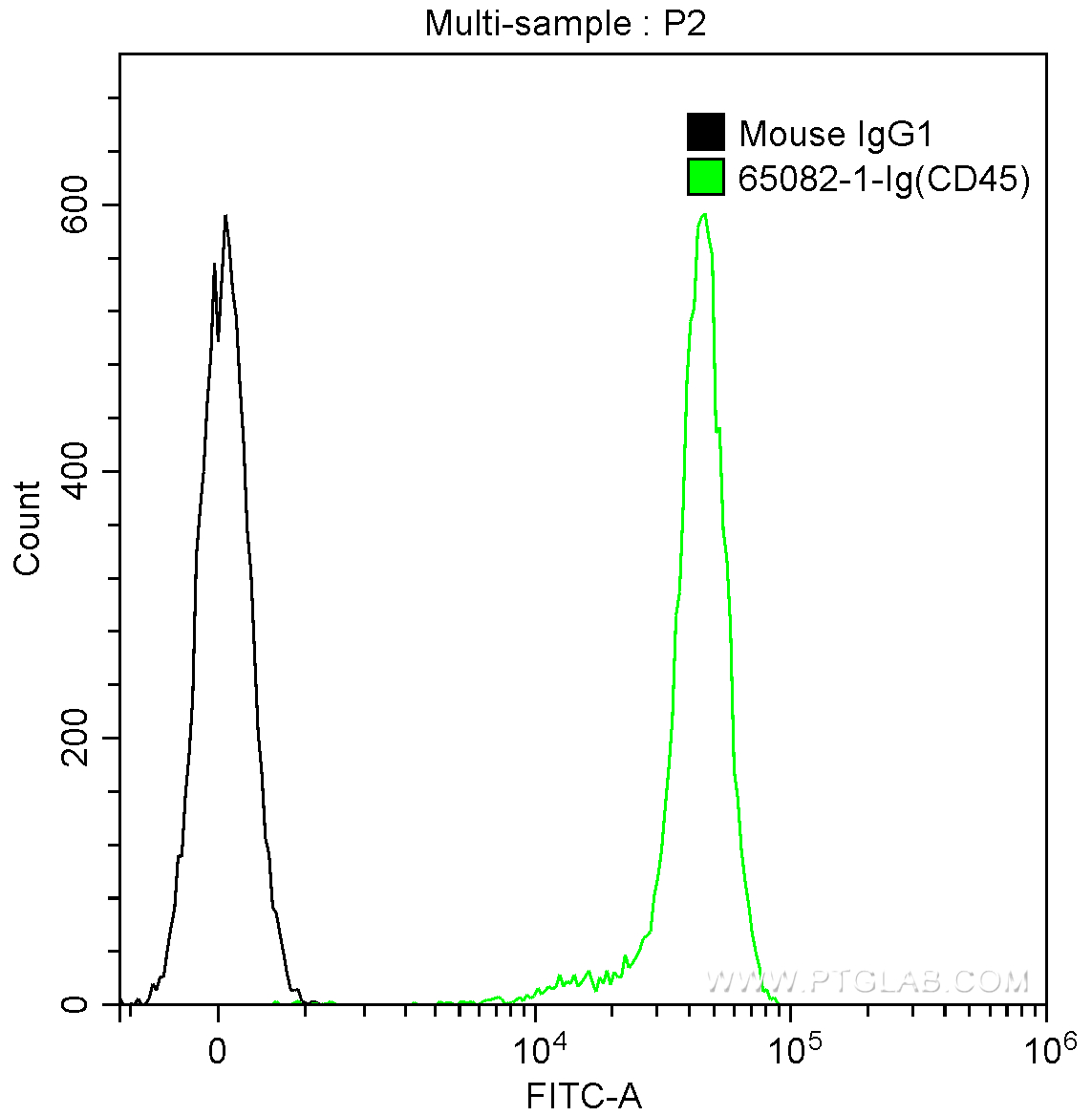Anti-Human CD45 (2D1)
CD45 Monoclonal Antibody for FC
Host / Isotype
Mouse / IgG1, kappa
Reactivity
Human
Applications
FC
Conjugate
Unconjugated
CloneNo.
2D1
验证数据展示
经过测试的应用
| Positive FC detected in | human peripheral blood lymphocytes |
Planning an IHC experiment? We recommend our IHCeasy CD45 Ready-To-Use IHC Kit. CD45 primary antibody included.
Planning an IF experiment? We recommend our CoraLite® Plus 488 and CoraLite® Plus 647 conjugated versions of this antibody.
推荐稀释比
| Application | Dilution |
|---|---|
| This reagent has been tested for flow cytometric analysis. It is recommended that this reagent should be titrated in each testing system to obtain optimal results. | |
| Sample-dependent, Check data in validation data gallery. | |
产品信息
65082-1-Ig targets CD45 in FC applications and shows reactivity with Human samples.
| Tested Applications | FC |
| Tested Reactivity | Human |
| Immunogen | Human PBMC 种属同源性预测 |
| Host / Isotype | Mouse / IgG1, kappa |
| Class | Monoclonal |
| Type | Antibody |
| Full Name | protein tyrosine phosphatase, receptor type, C |
| Synonyms | B220, CD45, CD45R, GP180, L CA, LCA, Leukocyte common antigen, LY 5, LY5, PTPRC, RPTPC, T200 |
| GenBank Accession Number | BC014239 |
| Gene Symbol | PTPRC |
| Gene ID (NCBI) | 5788 |
| ENSEMBL Gene ID | ENSG00000081237 |
| RRID | AB_2918385 |
| Conjugate | Unconjugated |
| Form | Liquid |
| Purification Method | Affinity purification |
| Storage Buffer | PBS with 0.1% sodium azide, pH 7.3. |
| Storage Conditions | Store at 2-8°C. Stable for one year after shipment. |
背景介绍
CD45, also known as protein tyrosine phosphatase, receptor type C, is a type I transmembrane protein expressed on the surface of all haematopoietic cells with the exception of erythrocytes and platelets (PMID: 3489673; 28615666). CD45 is a pan-haematopoietic cell marker and has been shown to be essential for T- and B-cell activation and signalling (PMID: 9429890; 16378097).
实验方案
| Product Specific Protocols | |
|---|---|
| FC protocol for CD45 antibody 65082-1-Ig | Download protocol |
| Standard Protocols | |
|---|---|
| Click here to view our Standard Protocols |
